Faculties
The Nuclear Engineering graduate major spans five departments in three schools: Mechanical Engineering(MECH), Electrical and Electronic Engineering(EE), Materials Science and Engineering(MAT), Chemical Science and Engineering(CAP), and Transdisciplinary Science and Engineering(TSE). In addition to fundamental science and engineering studies, students focus on the study and research of nuclear energy and radiation utilization while seeking solutions to environmental and social problems. In the following professor information, the belonging of each professor is written such as <MECH, TSE>, in case of the professor belongs to MECH as a primary school and TSE as a secondary school.
Assoc. Prof. Hiroshi AKATSUKA Lab. HP
hakatsuk「@」zc.iir.titech.ac.jp +81-3-5734-3379 Room: N1-413〈EE, TSE〉
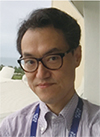
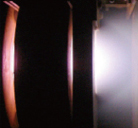 We are studying fundamentals of low-temperature plasmas. Even high-temperature plasmas in core of thermonuclear fusion reactors become colder near the reactor wall. We must understand them from comprehensive viewpoints, e.g., electric and electronic engineering, atomic and molecular physics, physical chemistry, rarefied gas dynamics, etc. They also have cross-disciplinary area with environmental science of atmosphere or ionosphere, or even with astronautics as thrusters for electric propulsion. In short, we study fundamentals of plasmas in scientifically interdisciplinary fields. The photo shows a supersonic plasma jet in a rarefied gas wind tunnel of my lab.
We are studying fundamentals of low-temperature plasmas. Even high-temperature plasmas in core of thermonuclear fusion reactors become colder near the reactor wall. We must understand them from comprehensive viewpoints, e.g., electric and electronic engineering, atomic and molecular physics, physical chemistry, rarefied gas dynamics, etc. They also have cross-disciplinary area with environmental science of atmosphere or ionosphere, or even with astronautics as thrusters for electric propulsion. In short, we study fundamentals of plasmas in scientifically interdisciplinary fields. The photo shows a supersonic plasma jet in a rarefied gas wind tunnel of my lab.
Prof. Toru OBARA Lab. HP
E-mai: tobara「@」zc.iir.titech.ac.jp +81-3-5734-2380 Room: N1-208〈TSE〉
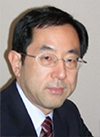
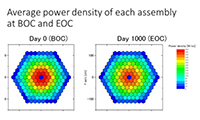 We are performing the study of innovative nuclear systems for future energy supply and the study of criticality safety in the fuel debris removal in the decommissioning of Fukushima Daiichi Nuclear Power Station. In the innovative nuclear systems study, we are studying the concept of nuclear reactors for the next generation which can satisfy the future needs. In the criticality safety study, we are studying the effective measures to avoid the accident in the decommissioning. The studies are performed using the highperformance servers in our lab. and the supercomputer of the institute.
We are performing the study of innovative nuclear systems for future energy supply and the study of criticality safety in the fuel debris removal in the decommissioning of Fukushima Daiichi Nuclear Power Station. In the innovative nuclear systems study, we are studying the concept of nuclear reactors for the next generation which can satisfy the future needs. In the criticality safety study, we are studying the effective measures to avoid the accident in the decommissioning. The studies are performed using the highperformance servers in our lab. and the supercomputer of the institute.
Assoc. Prof. Tatsuya KATABUCHI Lab. HP
buchi「@」zc.iir.titech.ac.jp +81-3-5734-3378 Room: N1-311〈TSE〉
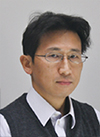 Study on Neutron Capture Reaction:
Study on Neutron Capture Reaction:
We measure neutron capture cross sections for development of nuclear transmutation systems and study of nucleosynthesis. Measurements are performed in LANE and the Japan Proton Accelerator Research Complex (J-PARC).
Development of an Imaging System for Online Dosimetry in Boron Neutron Capture Therapy:
We are developing an imaging system for dosimetry during treatment in boron neutron capture therapy. This system allows for evaluating the absorbed dose of a patient online, thereby improving determination of irradiation parameters and evaluation of treatment efficacy.
Prof. Yukitaka KATO Lab. HP
yukitaka「@」zc.iir.titech.ac.jp +81-3-5734-2967 Room: N1-302〈CAP, TSE〉
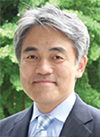
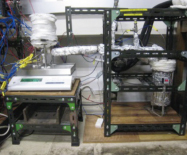 Contribution on energy saving and global environment protection through development of innovative and efficient energy conversion and storage technologies for nuclear, renewable and unused energies is the main theme of our laboratory. Thermochemical energy storage and conversion technologies for efficient utilization of thermal energy, hydrogen and other energy carriers, are examined in studies. Chemical heat pump, hydrogen production and system, and carbon recycling energy system are discussed experimentally. The photo shows a lab.-scale apparatus of Magnesium oxide/Water Chemical Heat Pump.
Contribution on energy saving and global environment protection through development of innovative and efficient energy conversion and storage technologies for nuclear, renewable and unused energies is the main theme of our laboratory. Thermochemical energy storage and conversion technologies for efficient utilization of thermal energy, hydrogen and other energy carriers, are examined in studies. Chemical heat pump, hydrogen production and system, and carbon recycling energy system are discussed experimentally. The photo shows a lab.-scale apparatus of Magnesium oxide/Water Chemical Heat Pump.
Assoc. Prof. Hiroshige KIKURA Lab. HP
kikura「@」zc.iir.titech.ac.jp +81-3-5734-3058 Room: N2-225〈MECH, TSE〉
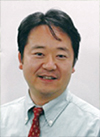
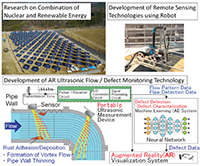 We are conducting research on reactor safety improvement and advancement based on process control, measurement, and diagnostic technologies for light water reactors, fast reactors, and future reactors. Recently, we are building a new academic discipline, “Revitalizics” for reconstruction of the disaster areas lost by the Great East Japan Earthquake and nuclear disaster, and are researching on the combination of nuclear energy and renewable energy, and developing remote sensing technology using robots, and developing advanced nuclear thermo-hydraulic measurement technology such as the AR ultrasonic flow / defect monitoring technology for onsite AI plant diagnosis (right figure).
We are conducting research on reactor safety improvement and advancement based on process control, measurement, and diagnostic technologies for light water reactors, fast reactors, and future reactors. Recently, we are building a new academic discipline, “Revitalizics” for reconstruction of the disaster areas lost by the Great East Japan Earthquake and nuclear disaster, and are researching on the combination of nuclear energy and renewable energy, and developing remote sensing technology using robots, and developing advanced nuclear thermo-hydraulic measurement technology such as the AR ultrasonic flow / defect monitoring technology for onsite AI plant diagnosis (right figure).
Prof. Yoshinao KOBAYASHI Lab. HP
ykobayashi「@」zc.iir.titech.ac.jp +81-3-5734-3075 Room: N2-328〈MAT〉
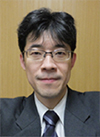
 Our goal is to ensure the safety of nuclear reactor all through its service time with possible severe accident and decommission process by developing the metallic materials having high reliability and soundness. In addition, to assess the access root to the fuel debris for its removal in Fukushima Dai-ichi nuclear power plant, damage and collapse behavior of structural metals in the reactor core should be well understood. Stable finalization of fuel debris is also of great significance. For these purposes, control and reduction of impurities in materials are studied as well as reaction between fuel debris and stainless steel as reactor core materials. The photo shows an electric resistance furnace with MoSi2 heating element which realize high temperature beyond 1600℃.
Our goal is to ensure the safety of nuclear reactor all through its service time with possible severe accident and decommission process by developing the metallic materials having high reliability and soundness. In addition, to assess the access root to the fuel debris for its removal in Fukushima Dai-ichi nuclear power plant, damage and collapse behavior of structural metals in the reactor core should be well understood. Stable finalization of fuel debris is also of great significance. For these purposes, control and reduction of impurities in materials are studied as well as reaction between fuel debris and stainless steel as reactor core materials. The photo shows an electric resistance furnace with MoSi2 heating element which realize high temperature beyond 1600℃.
Assoc.Prof.Masatoshi KONDO Lab. HP
kondo.masatoshi「@」zc.iir.titech.ac.jp +81-3-5734-3065 Room:N2-226〈MECH,TSE〉
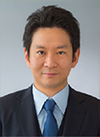
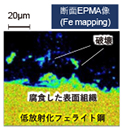 Liquid metals (Li, Pb, Sn, Ga, Pb-Li, Sn-Li and Pb-Bi) and molten salts (Flinak and Flibe) have excellent nuclear characteristics and thermal properties as a tritium breeder of fusion reactors and/or a coolant of generation IV nuclear reactors. We develop highpurity liquid alloys and molten salts, and investigate their thermal properties and chemical characteristics. We also develop some liquid metal loops to investigate the heat transfer, the mass transfer and the material compatibility of the high temperature fluids. (A right photograph shows liquid metal Pb, which is candidate coolant of fast reactors.)
Liquid metals (Li, Pb, Sn, Ga, Pb-Li, Sn-Li and Pb-Bi) and molten salts (Flinak and Flibe) have excellent nuclear characteristics and thermal properties as a tritium breeder of fusion reactors and/or a coolant of generation IV nuclear reactors. We develop highpurity liquid alloys and molten salts, and investigate their thermal properties and chemical characteristics. We also develop some liquid metal loops to investigate the heat transfer, the mass transfer and the material compatibility of the high temperature fluids. (A right photograph shows liquid metal Pb, which is candidate coolant of fast reactors.)
Assoc. Prof. Hiroshi SAGARA Lab. HP
sagara「@」zc.iir.titech.ac.jp +81-3-5734-3074 Room: N2-321〈TSE〉
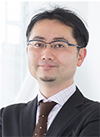
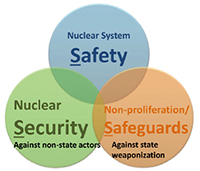 We are pursuing studies on robust nuclear energy system against threats to safety, security and non-proliferation, by system designing. Accident-torrent fuel for inherent safety and security, and proliferation resistance of nuclear energy system for security and nonproliferation are one of our targets of researches. Non-destructive assay technology R&D are also being performed to quantify the nuclear material inside fuel debris by passive γ measurement, cooperating with Japan Atomic Energy Agency, aiming to be applied for safe& secure decommissioning of Fukushima Daiichi Nuclear Power Station. User interface development between environmental dynamics and decision making is performed for effective evacuation planning.
We are pursuing studies on robust nuclear energy system against threats to safety, security and non-proliferation, by system designing. Accident-torrent fuel for inherent safety and security, and proliferation resistance of nuclear energy system for security and nonproliferation are one of our targets of researches. Non-destructive assay technology R&D are also being performed to quantify the nuclear material inside fuel debris by passive γ measurement, cooperating with Japan Atomic Energy Agency, aiming to be applied for safe& secure decommissioning of Fukushima Daiichi Nuclear Power Station. User interface development between environmental dynamics and decision making is performed for effective evacuation planning.
Assoc. Prof. Koichiro TAKAO Lab. HP
ktakao「@」zc.iir.titech.ac.jp +81-3-5734-2968 Room: N1-205〈CAP, TSE〉
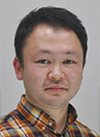
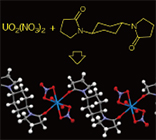 To guarantee feasibility and sustainability of nuclear energy system, it is important to understand coordination and solution chemistry of actinides and fission products, which are highly relevant to the nuclear fuel cycle. Main focus of this lab is understanding of fundamental chemistry of these metal ions in depth as well as exploring applicability of ionic liquids and microwave technology to develop bases of (1) fuel reprocessing and treatment of radioactive wastes, (2) effective use of depleted/recovered uranium, and (3) decontamination process for retrieval from Fukushima accident. Figure shows a 1-dimensional chain structure of uranyl nitrate complex bridged by uranium-selective precipitant.
To guarantee feasibility and sustainability of nuclear energy system, it is important to understand coordination and solution chemistry of actinides and fission products, which are highly relevant to the nuclear fuel cycle. Main focus of this lab is understanding of fundamental chemistry of these metal ions in depth as well as exploring applicability of ionic liquids and microwave technology to develop bases of (1) fuel reprocessing and treatment of radioactive wastes, (2) effective use of depleted/recovered uranium, and (3) decontamination process for retrieval from Fukushima accident. Figure shows a 1-dimensional chain structure of uranyl nitrate complex bridged by uranium-selective precipitant.
Assoc. Prof. Takehiko Tsukahara Lab. HP
ptsuka「@」zc.iir.titech.ac.jp +81-3-5734-3067 Room: N1-203〈CAP, TSE〉
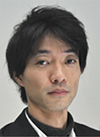
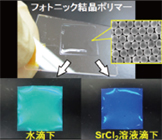 Nuclear waste management plays an important role for reducing radioactive wastes. We have investigated “simple and environmentally-friendly nuclear chemical system” using functional nanomaterials including photonic crystal, fluorescent reagents, stimuli-responsive polymers, supercritical fluids, and micro/nano chemical chip. This system makes it possible to reduce/separate/recycle radionucleids such as (actinides, rare-earth metals) from radioactive wastes, and to detect quickly and highly efficiency radionuclides at trace amounts of sample. Applications to decommissioning and nuclear medicine are also studying. A right photograph shows Sr ion sensing using photonic crystal polymer.
Nuclear waste management plays an important role for reducing radioactive wastes. We have investigated “simple and environmentally-friendly nuclear chemical system” using functional nanomaterials including photonic crystal, fluorescent reagents, stimuli-responsive polymers, supercritical fluids, and micro/nano chemical chip. This system makes it possible to reduce/separate/recycle radionucleids such as (actinides, rare-earth metals) from radioactive wastes, and to detect quickly and highly efficiency radionuclides at trace amounts of sample. Applications to decommissioning and nuclear medicine are also studying. A right photograph shows Sr ion sensing using photonic crystal polymer.
Assoc. Prof. Hiroaki TSUTSUI Lab. HP
htsutsui「@」zc.iir.titech.ac.jp +81-3-5734-3465 Room: N2-422〈TSE〉
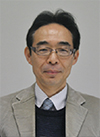
 Both a nuclear fusion which generates energies and a superconducting magnetic energy storage system which stores energies are studied. We theoretically derived an optimum coil with a strong magnetic field based on the virial theorem which represents the relation of magnetic energy and stress. A small fusion device and a superconducting coil were designed and constructed, and their efficiencies were demonstrated. Equilibrium, stability and confinement of plasmas are also studied by numerical calculations and theoretical models. A right photograph shows a superconducting magnet which demonstrated the virial theorem.
Both a nuclear fusion which generates energies and a superconducting magnetic energy storage system which stores energies are studied. We theoretically derived an optimum coil with a strong magnetic field based on the virial theorem which represents the relation of magnetic energy and stress. A small fusion device and a superconducting coil were designed and constructed, and their efficiencies were demonstrated. Equilibrium, stability and confinement of plasmas are also studied by numerical calculations and theoretical models. A right photograph shows a superconducting magnet which demonstrated the virial theorem.
Assoc. Prof. Masahiko Nakase Lab. HP
m.nakase「@」zc.iir.titech.ac.jp +81-3-5734-3992 Room:N1-410〈TSE〉
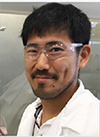
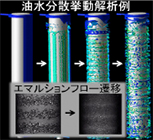 Separation science is a fundamental body of knowledge important in many situations such as treatment of spent nuclear fuel, remediation of contaminated environment and recovery of reusable precious metals from electronic waste. By understanding separation science from both chemistry and mechanical engineering, I aim to solve difficult problems in the world. I am developing ligands and adsorbents for MA/ Ln separation, separation equipment and separation processes. Synthetic organic chemistry, coordination and complex chemistries, chemical reactor design, numerical fluid dynamics are utilized in my research.
Separation science is a fundamental body of knowledge important in many situations such as treatment of spent nuclear fuel, remediation of contaminated environment and recovery of reusable precious metals from electronic waste. By understanding separation science from both chemistry and mechanical engineering, I aim to solve difficult problems in the world. I am developing ligands and adsorbents for MA/ Ln separation, separation equipment and separation processes. Synthetic organic chemistry, coordination and complex chemistries, chemical reactor design, numerical fluid dynamics are utilized in my research.
Assoc. Prof. Jun HASEGAWA Lab. HP
jhasegawa「@」zc.iir.titech.ac.jp +81-3-5734-3070 Room: N1-305〈TSE〉
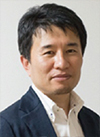
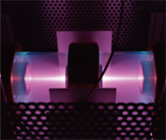 Our research lab covers research topics ranging from generation and control of various quantum beams (ions, clusters, neutrons, and photons) to applications of those quantum beams for the energy crisis and safe and secure societies. R&Ds on efficient generation of a giant cluster beam, which is expected as a nextgeneration quantum beam, a compact neutron source for explosive detection or non-destructive inspection technologies, and high-power beam sources for inertial confinement fusion energy are vigorously promoted. The figure shows an inertial electrostatic confinement (IEC) neutron source.
Our research lab covers research topics ranging from generation and control of various quantum beams (ions, clusters, neutrons, and photons) to applications of those quantum beams for the energy crisis and safe and secure societies. R&Ds on efficient generation of a giant cluster beam, which is expected as a nextgeneration quantum beam, a compact neutron source for explosive detection or non-destructive inspection technologies, and high-power beam sources for inertial confinement fusion energy are vigorously promoted. The figure shows an inertial electrostatic confinement (IEC) neutron source.
Prof. Noriyosu HAYASHIZAKI
nhayashi「@」zc.iir.titech.ac.jp +81-3-5734-3055 Room: N2-673〈TSE〉
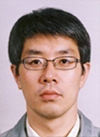
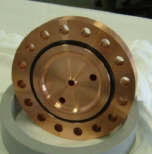 We study charged particle beams such as ion and electron, particle accelerators and their new applications. Beam and electromagnetic simulations, 3D-CAD design, high precision manufacturing by introducing CAE/CAM and experiments are carried out for fundamental, or solution-oriented issues. The topics of under investigation are a Boron Neutron Capture Therapy (BNCT) irradiation system, a positron accelerator (photograph) for fine material analysis and an electron accelerator for sterilization. We will respond for social needs through the developments of these technologies.
We study charged particle beams such as ion and electron, particle accelerators and their new applications. Beam and electromagnetic simulations, 3D-CAD design, high precision manufacturing by introducing CAE/CAM and experiments are carried out for fundamental, or solution-oriented issues. The topics of under investigation are a Boron Neutron Capture Therapy (BNCT) irradiation system, a positron accelerator (photograph) for fine material analysis and an electron accelerator for sterilization. We will respond for social needs through the developments of these technologies.
Assoc. Prof. Takuya HARADA Lab. HP
t_harada「@」zc.iir.titech.ac.jp +81-3-5734-3292 Room: N1-407〈CAP, TSE〉
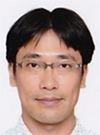
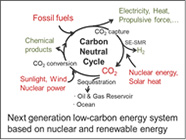 Our research goal is the establishment of next generation “Low-carbon energy system” for the sustainable utilization of useful energies as well as the mitigation of serious risks associated with the global warming due to the accumulation of anthropogenic CO2 in the atmosphere. Herein, we focus CO2 as a new type of energy carrier, allowing the stable utilization of nuclear and renewable energies, and explore the advanced methods for low-cost CO2 capture, carbon-free H2 production, and high efficiency electrochemical CO2 conversion through the developments of new functional materials and innovative chemical processes.
Our research goal is the establishment of next generation “Low-carbon energy system” for the sustainable utilization of useful energies as well as the mitigation of serious risks associated with the global warming due to the accumulation of anthropogenic CO2 in the atmosphere. Herein, we focus CO2 as a new type of energy carrier, allowing the stable utilization of nuclear and renewable energies, and explore the advanced methods for low-cost CO2 capture, carbon-free H2 production, and high efficiency electrochemical CO2 conversion through the developments of new functional materials and innovative chemical processes.
Prof. Yoshihisa MATSUMOTO Lab. HP
yoshim「@」zc.iir.titech.ac.jp +81-3-5734-2273 Room: N1-210〈TSE〉
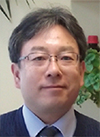
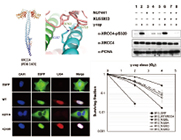 Radiation exerts its biological effects by generating various types of damages on DNA, among which DNA double-strand breaks (DSBs) are considered most critical. We are seeking to elucidate the molecular mechanisms of the recognition and repair of DNA DSBs through the integration of various cell and molecular biological techniques (Examples on right). Application of these mechanism will provide us with a novel approach to predict and/or control radiosensitivity and wll lead to the improvement of cancer radiation therapy.
Radiation exerts its biological effects by generating various types of damages on DNA, among which DNA double-strand breaks (DSBs) are considered most critical. We are seeking to elucidate the molecular mechanisms of the recognition and repair of DNA DSBs through the integration of various cell and molecular biological techniques (Examples on right). Application of these mechanism will provide us with a novel approach to predict and/or control radiosensitivity and wll lead to the improvement of cancer radiation therapy.
Assoc. Prof. Katsumi YOSHIDA Lab. HP
k-yoshida「@」zc.iir.titech.ac.jp +81-3-5734-2960 Room: N2-221〈MAT〉
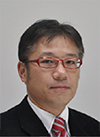
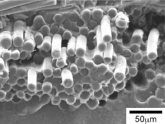 Ceramics have been recognized as attractive materials used in severe environment because they show excellent properties such as heat resistance, corrosion resistance, thermal stability and excellent wear resistance. Therefore, ceramics have been expected to be key materials for nuclear and fusion applications, environment and energy fields, and aerospace industries. In order to apply ceramic materials for these applications, their properties and functions corresponding to these applications must be improved in addition to their reliability as structural parts. Based on microstructure control in nano-, micro- and macro-scales, we have been developing high-performance advanced ceramic materials used in severe environment. Figure shows the SEM micrograph of the microstructure of the ceramic-based fiber-reinforced composite. Yoshida Lab.
Ceramics have been recognized as attractive materials used in severe environment because they show excellent properties such as heat resistance, corrosion resistance, thermal stability and excellent wear resistance. Therefore, ceramics have been expected to be key materials for nuclear and fusion applications, environment and energy fields, and aerospace industries. In order to apply ceramic materials for these applications, their properties and functions corresponding to these applications must be improved in addition to their reliability as structural parts. Based on microstructure control in nano-, micro- and macro-scales, we have been developing high-performance advanced ceramic materials used in severe environment. Figure shows the SEM micrograph of the microstructure of the ceramic-based fiber-reinforced composite. Yoshida Lab.
Prof. Masako IKEGAMI Lab. HP
maike「@」ne.titech.ac.jp +81-3-5734-2667 Room: W9-902 〈INNOVATION,TSE〉
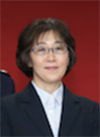 Dr. Ikegami is a professor of Department of Innovation Science at School of Environment and Society, being coaffiliated with the Nuclear Engineering Program to teach and research on social scientific issues of nuclear security, nuclear non-proliferation/disarmament, and nuclear/energy policy analysis. Nuclear technology and materials are of dual-use by nature as the application of nuclear energy initially derives from the Manhattan Project. Hence, basic knowledge of nuclear security is crucial for all students interested in nuclear engineering, just as major nuclear laboratories have security-related research centers and programs worldwide.
Dr. Ikegami is a professor of Department of Innovation Science at School of Environment and Society, being coaffiliated with the Nuclear Engineering Program to teach and research on social scientific issues of nuclear security, nuclear non-proliferation/disarmament, and nuclear/energy policy analysis. Nuclear technology and materials are of dual-use by nature as the application of nuclear energy initially derives from the Manhattan Project. Hence, basic knowledge of nuclear security is crucial for all students interested in nuclear engineering, just as major nuclear laboratories have security-related research centers and programs worldwide.
Assoc. Prof. Hiroki TAKASU Lab. HP
takasu.h「@」zc.iir.titech.ac.jp +81-3-5734-2683 Room:N1-304〈TSE〉
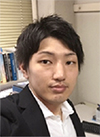
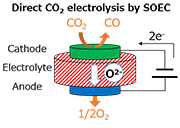 The global energy-related situation has undergone rapid changes in recent years. In particular, UNFCCC conference agreed to pursue efforts to limit the temperature increase from pre-industrial times to 1.5 degrees Celsius. To achieve this goal, it is necessary to realize the global target of net zero emissions of greenhouse gases by 2050. Our laboratory hopes to contribute to the realization of this carbon neutral goal through research and development related to energy storage and conversion, carbon dioxide (CO2) absorption, and energy carriers. Currently, our research themes include the development of solid oxide electrolysis cells as a direct CO2 resource conversion technology, the development of metal hydrogen separation membranes as an energy carrier production technology, and the development of ammonia absorption materials for energy carrier storage.
The global energy-related situation has undergone rapid changes in recent years. In particular, UNFCCC conference agreed to pursue efforts to limit the temperature increase from pre-industrial times to 1.5 degrees Celsius. To achieve this goal, it is necessary to realize the global target of net zero emissions of greenhouse gases by 2050. Our laboratory hopes to contribute to the realization of this carbon neutral goal through research and development related to energy storage and conversion, carbon dioxide (CO2) absorption, and energy carriers. Currently, our research themes include the development of solid oxide electrolysis cells as a direct CO2 resource conversion technology, the development of metal hydrogen separation membranes as an energy carrier production technology, and the development of ammonia absorption materials for energy carrier storage.
Prof. Yoichi MURAKAMI Lab. HP
murakami.y.af「@」m.titech.ac.jp TEL: +81-3-5734-3836 Room: N1-409〈TSE〉

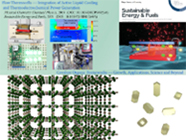 R&D of next generation energy and environmental technologies to realize carbon neutralization by developing new materials and systems. Thermal energy utilization (heat storage, forced-flow thermocells), developments of novel CO2 adsorption/absorption materials and system, new concept materials for solid batteries. We are exploring the cutting-edge R&D targets in comfortable and enjoyable lab atmosphere taking good communications between the professor, senior students, and junior students. You will have a lot of chance to make invention as we are exploring the domains where no other people have yet worked on. We welcome your questions and visit to our lab throughout the year.
R&D of next generation energy and environmental technologies to realize carbon neutralization by developing new materials and systems. Thermal energy utilization (heat storage, forced-flow thermocells), developments of novel CO2 adsorption/absorption materials and system, new concept materials for solid batteries. We are exploring the cutting-edge R&D targets in comfortable and enjoyable lab atmosphere taking good communications between the professor, senior students, and junior students. You will have a lot of chance to make invention as we are exploring the domains where no other people have yet worked on. We welcome your questions and visit to our lab throughout the year.
Assistant Professors
Assist. Prof. Shota IKEDA
ikeda.s.aj「@」m.titech.ac.jp +81-3-5734-3055 Room: N2-623〈TSE〉
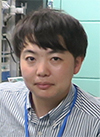
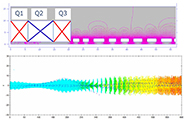 粒子加速器に関する研究・開発をおこなっております。粒子加速器は、荷電粒子を電磁場により高エネルギーにする装置であり、代表的な応用例としては放射線医療(放射線診断、放射線治療)における放射線発生装置や核医学用ラジオアイソトープの製造装置があげられます。特に、粒子線がん治療装置の入射器や中性子補足療法(BNCT)システムに応用されている、イオンビームを生成するイオン源や、初段加速器である高周波四重極(RFQ)線形加速器、後段のドリフトチューブ線形加速器を中心に研究を進めています。図はドリフトチューブ線形加速器内部の電位分布とビーム軌道のシミュレーションの様子です。
粒子加速器に関する研究・開発をおこなっております。粒子加速器は、荷電粒子を電磁場により高エネルギーにする装置であり、代表的な応用例としては放射線医療(放射線診断、放射線治療)における放射線発生装置や核医学用ラジオアイソトープの製造装置があげられます。特に、粒子線がん治療装置の入射器や中性子補足療法(BNCT)システムに応用されている、イオンビームを生成するイオン源や、初段加速器である高周波四重極(RFQ)線形加速器、後段のドリフトチューブ線形加速器を中心に研究を進めています。図はドリフトチューブ線形加速器内部の電位分布とビーム軌道のシミュレーションの様子です。
Assist. Prof. Chikako ISHIZUKA
chikako「@」zc.iir.titech.ac.jp +81-3-5734-2955 Room: N2-358〈TSE〉

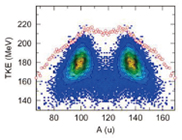 Our goal is improvement of nuclear data by elucidation of nuclear fission mechanism. Nuclear fission of actinides is the most fundamental phenomenon for nuclear power system. However, there are some open questions on fission mechanism in this region, e.g. the transition of mass peak structure and the incident energy dependence of neutron multiplicity. These information on fission products and neutrons directly affects the safety of nuclear facilities and evaluation of decommission process, as the input nuclear data. Therefore we have developed theoretical models by collaborating with scientists to predict fission products as accurate as possible. Right figure shows the mass dependence of the total kinetic energy based on the 4D-Langevin model.
Our goal is improvement of nuclear data by elucidation of nuclear fission mechanism. Nuclear fission of actinides is the most fundamental phenomenon for nuclear power system. However, there are some open questions on fission mechanism in this region, e.g. the transition of mass peak structure and the incident energy dependence of neutron multiplicity. These information on fission products and neutrons directly affects the safety of nuclear facilities and evaluation of decommission process, as the input nuclear data. Therefore we have developed theoretical models by collaborating with scientists to predict fission products as accurate as possible. Right figure shows the mass dependence of the total kinetic energy based on the 4D-Langevin model.
Assist. Prof. Mikio SHIMADA
mshimada「@」zc.iir.titech.ac.jp +81-3-5734-3703 Room: N1-211〈TSE〉
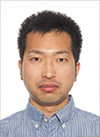
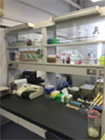 Genome stability is maintained by many molecular mechanisms such as DNA repair, cell cycle checkpoint, centrosome maintenance and apoptosis. Defect of these mechanisms cause radiation high sensitivity, developmental failure and cancer development. We are studying molecular mechanisms of radiation high sensitivity inherited diseases. Our goal is to elucidate the relationship between disease and molecular mechanisms. Picture shows biochemical experimental room to analyze DNA and protein.
Genome stability is maintained by many molecular mechanisms such as DNA repair, cell cycle checkpoint, centrosome maintenance and apoptosis. Defect of these mechanisms cause radiation high sensitivity, developmental failure and cancer development. We are studying molecular mechanisms of radiation high sensitivity inherited diseases. Our goal is to elucidate the relationship between disease and molecular mechanisms. Picture shows biochemical experimental room to analyze DNA and protein.
Assist. Prof. Shigehiko FUNAYAMA
funayama.s.aa「@」m.titech.ac.jp +81-3-5734-3865 Room: N2-327〈TSE〉
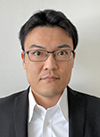
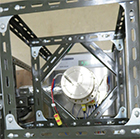 Thermal energy storage is an important technology for improving the energy efficiency of thermal processes and for large-scale storage of renewable energies, which can contribute to enhancing the carbon neutrality of our societies. Thermochemical energy storage is a thermal energy storage technology that uses chemical reactions. We aim at developing practical composites and reactors, with an improved heat transfer and cyclic durability, for thermochemical energy storage based on experimental and numerical approaches. The right figure shows a laboratory-scale fixed-bed reactor for assessing the performance of developed composites.
Thermal energy storage is an important technology for improving the energy efficiency of thermal processes and for large-scale storage of renewable energies, which can contribute to enhancing the carbon neutrality of our societies. Thermochemical energy storage is a thermal energy storage technology that uses chemical reactions. We aim at developing practical composites and reactors, with an improved heat transfer and cyclic durability, for thermochemical energy storage based on experimental and numerical approaches. The right figure shows a laboratory-scale fixed-bed reactor for assessing the performance of developed composites.
Assist. Prof. Shintaro YASUI
yasui「@」zc.iir.titech.ac.jp +81-3-5734-3060 Room: N2-324〈MAT〉

 We have investigated energy materials and related devises in our life. An electric energy is demanded more than ever due to not only electric devised but also electric vehicles and system kitchens. We must improve the energy materials which are “tool” of energy harvester and storage. We invent novel materials from the basic science point of view, open the new world we have never seen before.(Right picture) A deposition of LiCoO2 cathode thin film by pulsed laser deposition.
We have investigated energy materials and related devises in our life. An electric energy is demanded more than ever due to not only electric devised but also electric vehicles and system kitchens. We must improve the energy materials which are “tool” of energy harvester and storage. We invent novel materials from the basic science point of view, open the new world we have never seen before.(Right picture) A deposition of LiCoO2 cathode thin film by pulsed laser deposition.
Visiting Faculties
Visiting Prof. Hideyuki FUNASAKA (ATOX Co., Ltd.)
funasaka.hideyuki「@」ne.titech.ac.jp 〈TSE〉
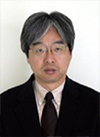
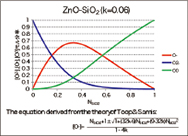 The study of glass matrix for vitrified waste in advanced fuel cycle. It is necessary to develop the glass matrix with excellent environ-mental properties for high-level vitrified waste in advanced fuel cycle. As first step, the purpose of this study is to elucidate the relation between the structure and the redox reaction of metal ion in glass. By focusing on the basic reaction of oxygen states in glass (O0 +O2- → 2O-), we aim to elucidate the reaction between those kinds of oxygen and FPs in metallic ion with the results of NMR and EXAFS.
The study of glass matrix for vitrified waste in advanced fuel cycle. It is necessary to develop the glass matrix with excellent environ-mental properties for high-level vitrified waste in advanced fuel cycle. As first step, the purpose of this study is to elucidate the relation between the structure and the redox reaction of metal ion in glass. By focusing on the basic reaction of oxygen states in glass (O0 +O2- → 2O-), we aim to elucidate the reaction between those kinds of oxygen and FPs in metallic ion with the results of NMR and EXAFS.
Visiting Prof. Shinichi KOYAMA (JAEA)
koyama.shinichi「@」jaea.go.jp +81-246-35-7856〈TSE〉
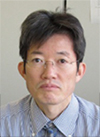
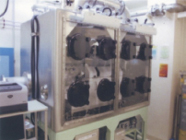 Analytical technique and chemical separation method of actinides and fission products included in spent nuclear fuels are studied at post-irradiation examination facilities. The transmutation of these separated element or nuclide using nuclear reactor, treatment for the disposal of waste, and the utilization as a nuclear rare metal will be proposed and evaluated(. Photo: Globe-box type ICP mass spectrometer)
Analytical technique and chemical separation method of actinides and fission products included in spent nuclear fuels are studied at post-irradiation examination facilities. The transmutation of these separated element or nuclide using nuclear reactor, treatment for the disposal of waste, and the utilization as a nuclear rare metal will be proposed and evaluated(. Photo: Globe-box type ICP mass spectrometer)
Visiting Assoc. Prof. Masayuki TAKEUCHI (JAEA)
takeuchi.masayuki「@」jaea.go.jp +81-29-282-1111〈TSE〉
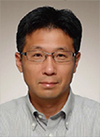
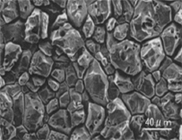 Development of reprocessing equipments is an important issue for advanced fuel cycle. In the development, a corrosion behavior in nitric acid should be carefully considered to maintain the containment because they include some media with high radioactivity. Even stainless steels, which are common corrosion-resistant materials, suffer severe intergranular corrosion attack in nitric acid with strong oxidant as shown in the photo. Back-end is a key technology in the fuel cycle to solve the critical problem on radioactive waste. We aim the construction of advanced reprocessing system through the development of equipments.
Development of reprocessing equipments is an important issue for advanced fuel cycle. In the development, a corrosion behavior in nitric acid should be carefully considered to maintain the containment because they include some media with high radioactivity. Even stainless steels, which are common corrosion-resistant materials, suffer severe intergranular corrosion attack in nitric acid with strong oxidant as shown in the photo. Back-end is a key technology in the fuel cycle to solve the critical problem on radioactive waste. We aim the construction of advanced reprocessing system through the development of equipments.